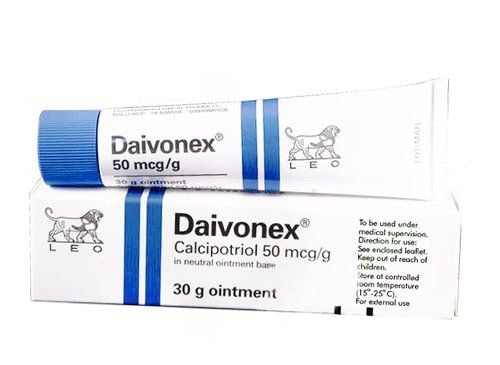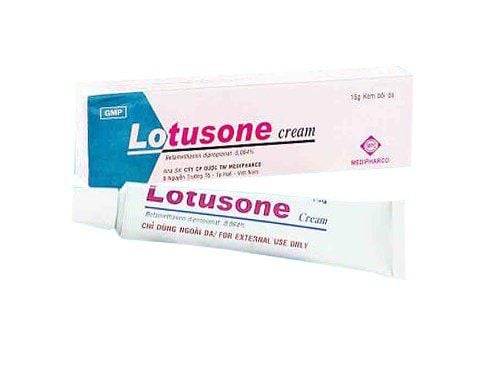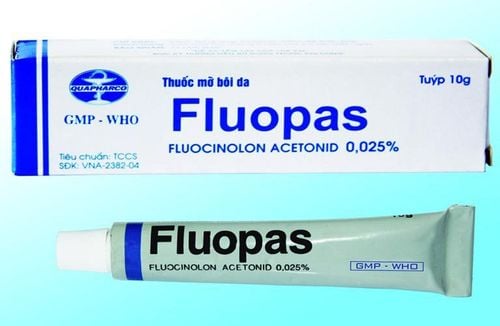This is an automatically translated article.
Dry skin, leech nests, eczema ... are dermatological diseases that cause discomfort and loss of aesthetics for patients. The definitive treatment of the disease is not only based on the adjustment of lifestyle and nutrition but also depends largely on the drugs to treat dermatological diseases. Perasolic is one of the commonly prescribed medications in this situation.
1. What is Perasolic?
Perasolic medicine contains the main ingredients are salicylic acid and betamethasone dipropionate. Each ingredient in the drug has its own effects. Specifically:
Salicylic acid is a drug capable of disinfecting the skin after strongly peeling the stratum corneum. In high/low concentrations, salicylic acid will have other effects on the stratum corneum. At low concentrations, the drug creates the stratum corneum, at high concentrations it exfoliates the stratum corneum.
The mechanism of action of salicylic acid in exfoliating the stratum corneum, first softening and then destroying this layer by endogenous hydration. Or salicylic acid lowers the pH, causing the stratified epithelium to swell, then peel off. In case the patient applies too much medicine, it will reverse the effect of salicylic acid, leading to skin necrosis. In addition, salicylic acid is known for its anti-fungal effects but is weakly active. It works by shedding the stratum corneum, preventing fungal growth and allowing antifungal medications to penetrate the skin.
This ingredient may cause severe irritation on the gastrointestinal mucosa or other tissues if systemic administration. Therefore, its use is not recommended. In addition to salicylic acid, Perasolic also contains Betamethasone - a synthetic corticosteroid that has a very strong glucocorticoid effect but negligible mineralocorticoid. The main use of Betamethasone is anti-inflammatory, anti-allergic.
2. Uses of the drug Perasolic
Thanks to the above 2 ingredients, Perasolic medicine is applied effectively in cases of reducing inflammatory symptoms of dry skin disease and keratosis pilaris that respond to corticosteroids with diseases:
Psoriasis Chronic atopic dermatitis Eczema Chronic atopic dermatitis Dermatitis neurodermatitis, lichen planus, eczema. Fish scale disease Some of the following cases, the drug will not be allowed to be prescribed to ensure the patient's health:
Children under 12 months of age Patient allergic to any ingredient of the drug Patient has skin disease infections like: shingles, herpes, chickenpox...
3. Dosage and how to use Perasolic
Perasolic medicine is prepared in the form of an ointment, applied to the skin. Patients can apply the drug to the infected skin twice a day in the morning and evening. Some notes when using this ointment:
Clean your hands and the affected area, then dry the area with a clean towel. Apply a thin layer of ointment to the affected area. In case of missed dose, reapply as soon as you remember. If the dose is missed if it is almost time for the next dose skip it, and use the next dose as scheduled. There have been cases of overdose when applying topical corticosteroids such as secondary adrenal insufficiency, Cushing's disease, salicylate poisoning... In this case, the patient should stop using the drug, and immediately go to the medical facility. nearest to be handled promptly.
4. Perasolic side effects
Perasolic drug causes side effects during use. When these symptoms arise, it is important to notify your doctor for prompt treatment. Patients should notify their doctor for timely diagnosis and treatment instructions, and do not arbitrarily use other drugs to treat side effects of the drug.
Some side effects of Perasolic medicine include: dry skin, folliculitis, hirsutism, purulent rash, hypopigmentation, perioral dermatitis, contact allergy,...
The above is not are all side effects of Perasolic. Therefore, during the course of taking the drug, if you encounter any unusual symptoms that are suspected to be caused by the drug, the patient should consult a doctor.
5. Perasolic drug interactions
Currently, there are no reports of drug interactions with Perasolic. To ensure safety and effectiveness, you should proactively make a list of all medications you are taking (including prescription, nonprescription, herbal and dietary supplements) and show them to your doctor or pharmacist. advise.
Besides drug interactions, Perasolic drugs can interact with alcohol and some soft drinks. As a result, Perasolic will increase side effects.
6. Be careful when using Perasolic medicine
Some notes when using Perasolic medicine:
Pregnant and lactating women only use the drug when necessary, avoid taking it for a long time to avoid affecting the health of the pregnant woman and the baby. The drug does not affect the patient's ability to drive and use machines. Avoid application to mucous membranes, mouth, eyes, damaged skin or open wounds. Do not apply pressure on the area of application. Above is information about the uses, dosage and precautions when using Perasolic medicine. To ensure the safety of health and maximize the effectiveness of treatment, patients need to take the medicine exactly as directed by the doctor. Note, Perasolic medicine is a prescription drug, and patients absolutely must not use it without a prescription from a specialist.
Please dial HOTLINE for more information or register for an appointment HERE. Download MyVinmec app to make appointments faster and to manage your bookings easily.













